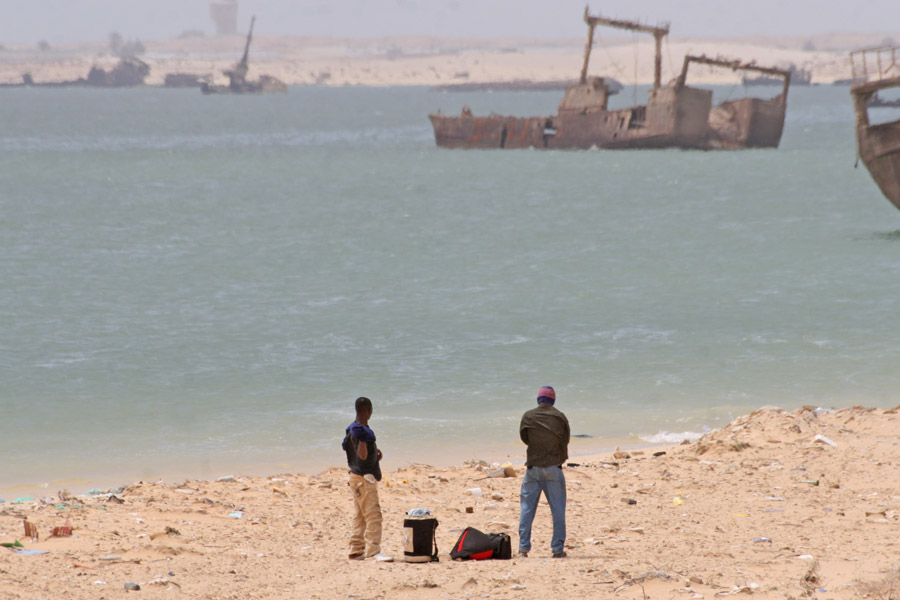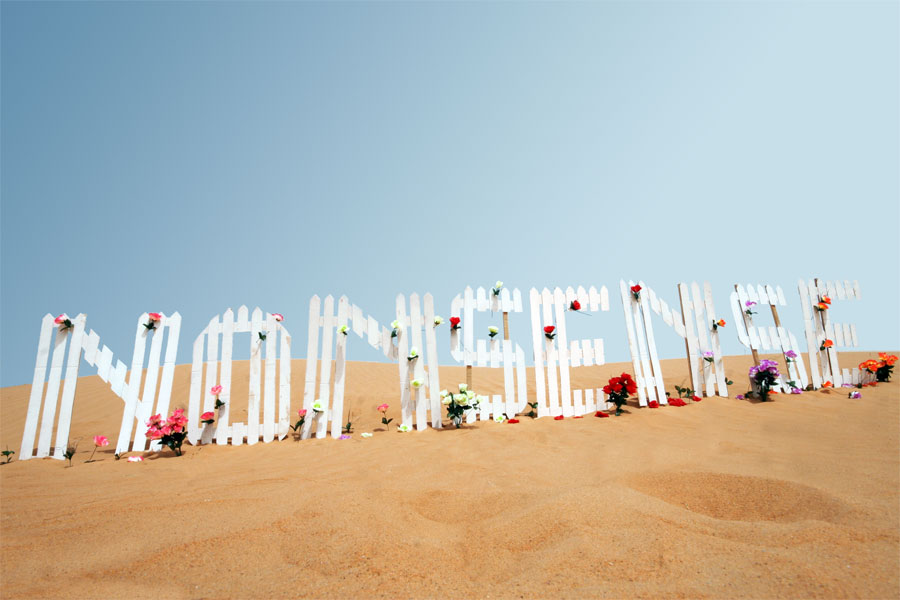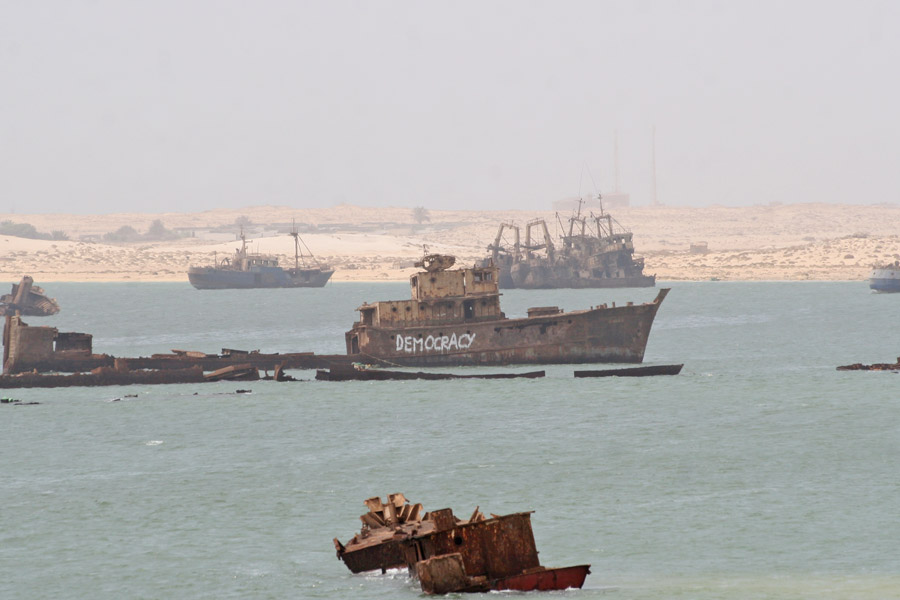Nonsense Democracy
YEAR
2008
Route
Milano > Genova > Barçelona > Algeciras > Ceuta > Marrakesh > Dakhla > Nouadhibou > Atar > Nouakchott > Bamako > Mopti > Timbouktou
Identity and landscape
Filippo Minelli started a month-long journey from Europe to Timbouktou, the hearth of the Sahel region in Western Africa famous in the memories of foreigners for being an exotic destination since centuries as well as being one of the main hubs for radical Islamic independentist movements. Some of these movements are fueled and financed by groups smuggling weapons, drugs and organizing human-trafficking of unauthorized immigrants towards Europe.
Some migrant-routes cross the Sahara Desert to reach the Mediterranean Sea, while others lead to costal areas of the Atlantic Ocean where migrants are embarked to reach European coasts undertaking unbelievable risks.
Minelli traced the path of his travel along these two routes and documented with digital and instant photography the landscape and situations, as well as creating two temporary interventions: a provocative fence in the middle of the Saharan Desert ‘no mans land’ between Mali and Mauritania, raising in the viewer a bitter smile in relation to the inefficient militarization of European borders and the irrational national-borders traced in the desert by colonial Empires against which Islamic groups are fighting, and the second in the coastal city of Nouadhibou, one of the main spots for illegal immigrants leaving Africa to reach Europe by boat.

Nouadhibou is also one of the main dumping area for western shipwrecks, thanks to the hi-level of corruption within the local authorities. Boats officially arrive to stay for a limited time and only disappear years later, when young boys start to work hard demolishing them illegally to make money selling their steel, paying other bribes to the already-corrupted authorities to be allowed to work.
A week after the realization of Minelli’s ‘Democracy’ intervention a Coup d’état took place in the Mauritanian capital-city Nouakchott, exactly when those young boys started demolishing the ‘Democracy’ boat to sell its steel in an unintentional sad metaphor.




